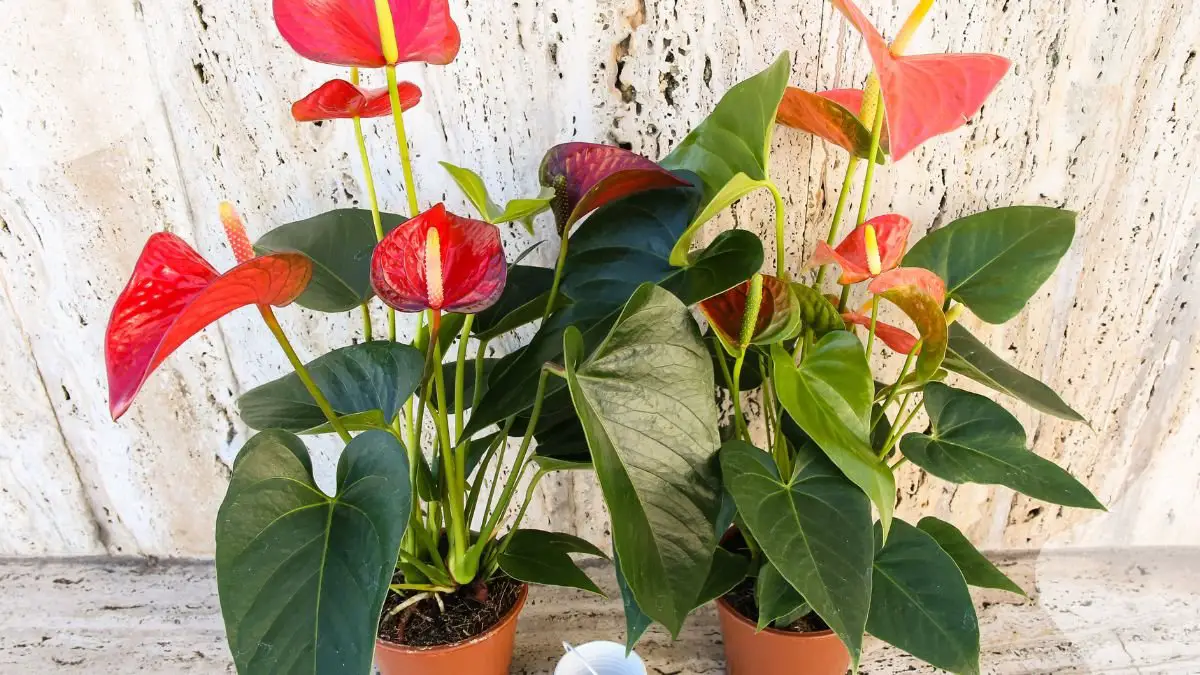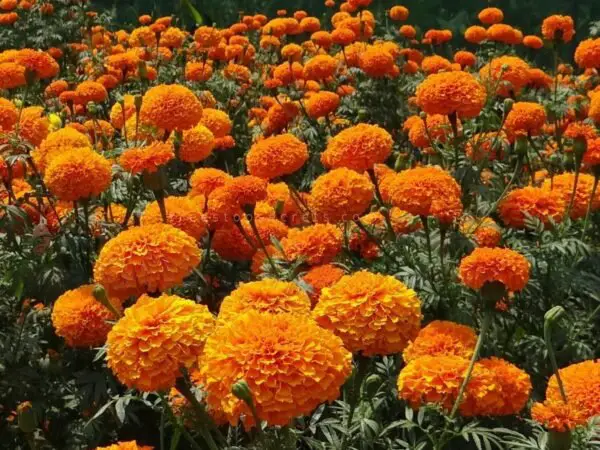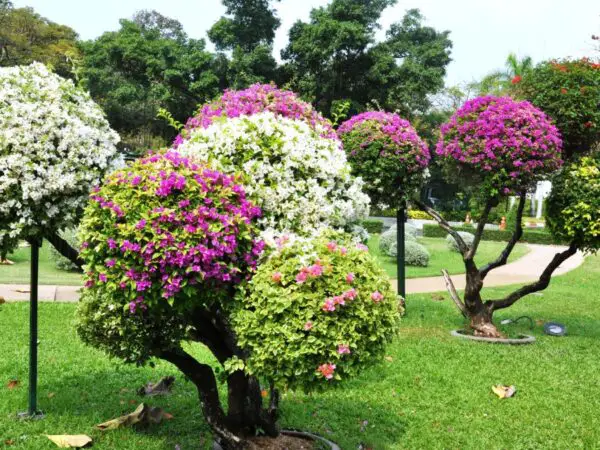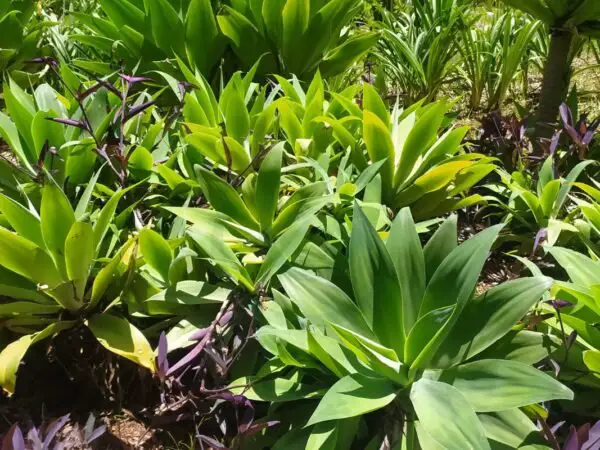If you're looking to brighten up your home with vibrant colors, indoor plants with red flowers are a fantastic choice. They can add a splash of color and a touch of nature to any room. Whether you prefer the bold blooms of an Anthurium or the delicate petals of a Hibiscus, I can help you find the perfect plant to suit your needs and preferences. Indoor plants with red flowers not only enhance your living space but also provide numerous health benefits.
Indoor plants with red flowers are varied and beautiful. Popular choices include the Anthurium, which boasts heart-shaped leaves and striking red spathes, and the Christmas Cactus, known for its cascading red blooms. The Hibiscus is another favorite, featuring large, trumpet-shaped flowers. Each of these plants has its own unique requirements for light, water, and care. For example, Anthuriums thrive in indirect light and need moderate watering, while Hibiscuses prefer bright, direct sunlight and more frequent watering.
If you're interested in adding indoor plants with red flowers to your home, there are many options to explore. From care tips to choosing the right plant for your environment, I have plenty of information to share. Let's transform your space with the beauty of red blooms!
Anthurium Basics
Choosing the Right Spot
- Place Anthuriums in indirect light to prevent leaf burn.
- Consistent temperatures are crucial for optimal growth.
- Keep Anthuriums away from air conditioning or heating vents.
Watering Needs
- Water when the top inch of soil is dry to the touch.
- Use room temperature water to avoid shocking the plant.
- Adjust watering based on light and warmth levels.
Light Requirements
- Provide moderate to medium light for Anthuriums to bloom.
- Avoid direct sunlight to prevent leaf scorching.
- Consider using sheer curtains for light filtering.
Soil and Potting
- Use well-draining soil mix suitable for epiphytes like sphagnum.
- Repot every 2-3 years for soil refresh and growth space.
- Choose pots with drainage holes to avoid waterlogging.
Care Tips for Anthuriums
Fertilizing Schedule
Fertilize Anthuriums using a phosphorous-rich fertilizer in the growing season. Avoid fertilizing in late fall or winter to prevent nutrient buildup. Apply fertilizer regularly but sparingly to prevent overfeeding.
Humidity and Temperature
Maintain humidity levels above 60% to recreate Anthuriums' native rainforest environment. Keep Anthuriums warm during growth periods and cooler in winter. Shield plants from cold drafts and sudden temperature changes.
Pruning Practices
Trim yellowing leaves or spent flowers to encourage new growth. Use clean, sharp scissors to prevent damage or infection. Prune Anthuriums in early spring for optimal health.
Pest Management
Regularly check for common pests like aphids or spider mites. Address infestations promptly with neem oil or insecticidal soap. Isolate infected plants to halt the spread of pests.
Growing Flamingo Flowers Indoors
Planting Steps
Plant Anthuriums in a pot with drainage holes using suitable soil mix. Loosen roots before placing in the new pot at the same depth.
- Choose a pot with drainage holes and suitable soil mix for Anthuriums.
- Gently remove the plant from its nursery pot and loosen the roots.
- Place the plant in the new pot, ensuring it sits at the same depth as before.
Watering Tips
Water Anthuriums thoroughly, allowing excess water to drain out. Avoid overwatering to prevent root rot and fungal issues. Consider self-watering pots for consistent moisture levels.
- Water Anthuriums thoroughly, allowing excess water to drain out.
- Avoid overwatering to prevent root rot and fungal issues.
- Consider using a self-watering pot for consistent moisture levels.
Light and Temperature
Provide moderate light levels for Anthuriums to thrive. Maintain temperatures between 65-80°F during the day and above 60°F at night. Prevent stress by avoiding sudden temperature fluctuations.
- Provide moderate light levels for Anthuriums to thrive.
- Maintain temperatures between 65-80°F during the day and above 60°F at night.
- Avoid sudden temperature fluctuations to prevent stress on the plant.
Common Issues
Watch out for brown leaf tips indicating low humidity levels. Address yellowing leaves promptly by adjusting watering or light conditions. Monitor signs of root rot like wilting or mushy stems.
- Watch out for brown leaf tips, indicating low humidity levels.
- Address yellowing leaves promptly by adjusting watering or light conditions.
- Monitor for signs of root rot, such as wilting or mushy stems.
Propagation Techniques
Division Method
When propagating indoor plants with red flowers like Anthurium, the division method is effective. During repotting, divide the plant carefully to create new ones. Use a clean, sharp knife to separate healthy sections with roots intact. Then, plant these divided sections into individual pots filled with fresh soil.
Seed Germination
For Anthurium, seed germination is another viable propagation technique. Start by placing Anthurium seeds in a seed-starting mix for optimal growth conditions. It's crucial to maintain consistent moisture levels and warmth to support seedling growth. Once the seedlings develop true leaves, transplant them into separate pots for further development.
Cuttings Propagation
Cuttings propagation is a popular method for propagating indoor plants with red flowers such as Anthurium. To start, take stem cuttings that have at least two nodes to ensure successful propagation. Before planting the cuttings in a moist, well-draining mix, dip them in rooting hormone. Ensure to keep the cuttings in a warm and humid environment until roots begin to develop.
Problem-Solving Tips
Yellow Leaves
Yellow leaves on indoor plants with red flowers can indicate overwatering or underwatering. Check the soil moisture level to determine the cause. Trim yellow leaves near the stem to maintain the plant's appearance. Adjust watering frequency and light exposure to prevent further yellowing.
Drooping Flowers
To address drooping Anthurium flowers, provide support with stakes to prevent breakage. Ensure adequate watering and proper light levels for the plant. Remove any damaged flowers to stimulate new blooms and enhance the plant's overall look.
Root Rot
Root rot in indoor plants can be identified by mushy, dark roots and a foul smell. Trim affected roots and replant Anthuriums in fresh, well-draining soil to promote recovery. Adjust watering practices to avoid future occurrences of root rot and maintain plant health.
Pest Infestations
Inspect indoor plants with red flowers for signs of pest infestations such as webbing or stippling on leaves. Treat pests using natural remedies like neem oil or insecticidal soap to protect the plant. Isolate infected plants to prevent the spread of pests to other houseplants and ensure a healthy environment for all greenery.
Choosing Anthurium Varieties
Popular Types
- Explore popular Anthurium varieties like Anthurium andraeanum with red flowers.
- Discover unique species with different flower colors, including white, pink, and purple.
- Consider Anthurium hybrids for a diverse range of flower shapes and sizes.
Flower Colors
- Appreciate the vibrant red flowers of Anthurium andraeanum.
- Explore other Anthurium varieties with white, pink, or bi-colored flowers.
- Mix and match Anthurium colors to create a colorful indoor garden display.
Size and Growth
- Expect Anthuriums to reach heights of 1-2 feet indoors.
- Provide adequate space for Anthuriums to spread out and grow.
- Prune leggy growth to maintain a compact and bushy appearance.
Other Red-Flowering Indoor Plants
Care Overview
Taking care of red houseplants like Anthurium involves providing adequate light, water, and maintaining optimal temperature levels. These plants thrive in bright, indirect light, making them ideal for indoor environments. Ensure the soil remains moist but not waterlogged to prevent root rot. Proper drainage is crucial for the plant's health.
Humidity plays a vital role in the well-being of Anthuriums. These plants prefer high humidity levels, which can be achieved by using a pebble tray or a humidifier near the plant. Choosing a well-draining potting mix with good soil quality is essential for Anthurium growth. Regularly check the soil moisture level to avoid overwatering or underwatering.
Regular maintenance tasks such as pruning and fertilizing are necessary for Anthurium care. Pruning helps promote new growth and prevents overcrowding, while fertilizing provides essential nutrients for healthy development. Keep an eye on the plant's overall health and address any issues promptly to ensure its longevity.
Growing Tips
To enhance the growth of Anthuriums, consider rotating the plants regularly to ensure even exposure to light on all sides. This simple practice promotes balanced growth and prevents the plant from leaning towards the light source. Monitoring the plant closely allows you to detect any signs of stress or disease early on, enabling timely intervention.
Using a pebble tray filled with water beneath the plant's pot can help increase humidity levels around the Anthurium. This method mimics the plant's natural habitat and supports its growth. By maintaining consistent humidity levels, you can prevent issues like browning leaf tips or wilting foliage. Incorporating this tip into your care routine can benefit the overall health of your Anthurium.
Propagation Methods
Anthuriums can be propagated through various methods such as division, seed germination, and cuttings. Experimenting with different propagation techniques allows you to expand your collection of these vibrant houseplants. Sharing propagated Anthuriums with friends and family not only spreads joy but also fosters a sense of community among fellow houseplant enthusiasts.
Exploring propagation methods like division involves separating healthy sections of the plant to create new individuals. Seed germination requires patience but can yield rewarding results as new Anthuriums sprout from seeds. Cuttings offer a quicker way to propagate Anthuriums by rooting stem sections in water or soil. Each method presents unique opportunities to nurture and grow these beautiful red-flowering indoor plants.
Summary
Incorporating red-flowering indoor plants like Anthuriums can add a pop of color and vibrancy to your living space. By understanding the basics of Anthurium care, growth techniques, propagation, and troubleshooting tips, you can successfully cultivate these beautiful plants indoors. Exploring different red-flowering plant varieties can further enhance the aesthetic appeal of your home while providing a rewarding gardening experience. Remember to select plants that suit your environment and lifestyle for optimal growth and enjoyment.
Enhance your indoor garden with red-flowering plants such as Anthuriums to create a visually stunning and thriving oasis in your home. Implement the care tips and techniques shared to ensure the health and vitality of your plants, and don't hesitate to experiment with various varieties to find the perfect fit for your space. Start your indoor plant journey today and enjoy the beauty and benefits these plants bring to your surroundings.
Frequently Asked Questions
Can Anthuriums be grown indoors?
Yes, Anthuriums can thrive indoors as long as they receive bright, indirect light and consistent watering. They are perfect for adding a pop of color to your indoor space.
How do I propagate Anthurium plants?
Anthuriums can be propagated through division or by planting seeds. Division involves separating the plant into sections with roots, while seeds require a bit more patience but can be rewarding.
What are some common issues when caring for Anthuriums?
Common issues include overwatering, which can lead to root rot, and insufficient humidity causing brown leaf tips. Ensure well-draining soil and misting to maintain optimal conditions.
Which varieties of Anthurium are suitable for indoor cultivation?
Popular Anthurium varieties for indoor growing include Anthurium andreanum (Flamingo Flower) and Anthurium scherzerianum (Painter's Palette). These varieties are known for their colorful flowers and relatively low maintenance requirements.
Are there other red-flowering indoor plants similar to Anthuriums?
Yes, some other red-flowering indoor plants you can consider include Bromeliads, Kalanchoe blossfeldiana (Flaming Katy), and Schlumbergera truncata (Christmas Cactus). These plants offer a variety of shapes and sizes to suit different preferences.
Image Source: Paid image from CANVA





